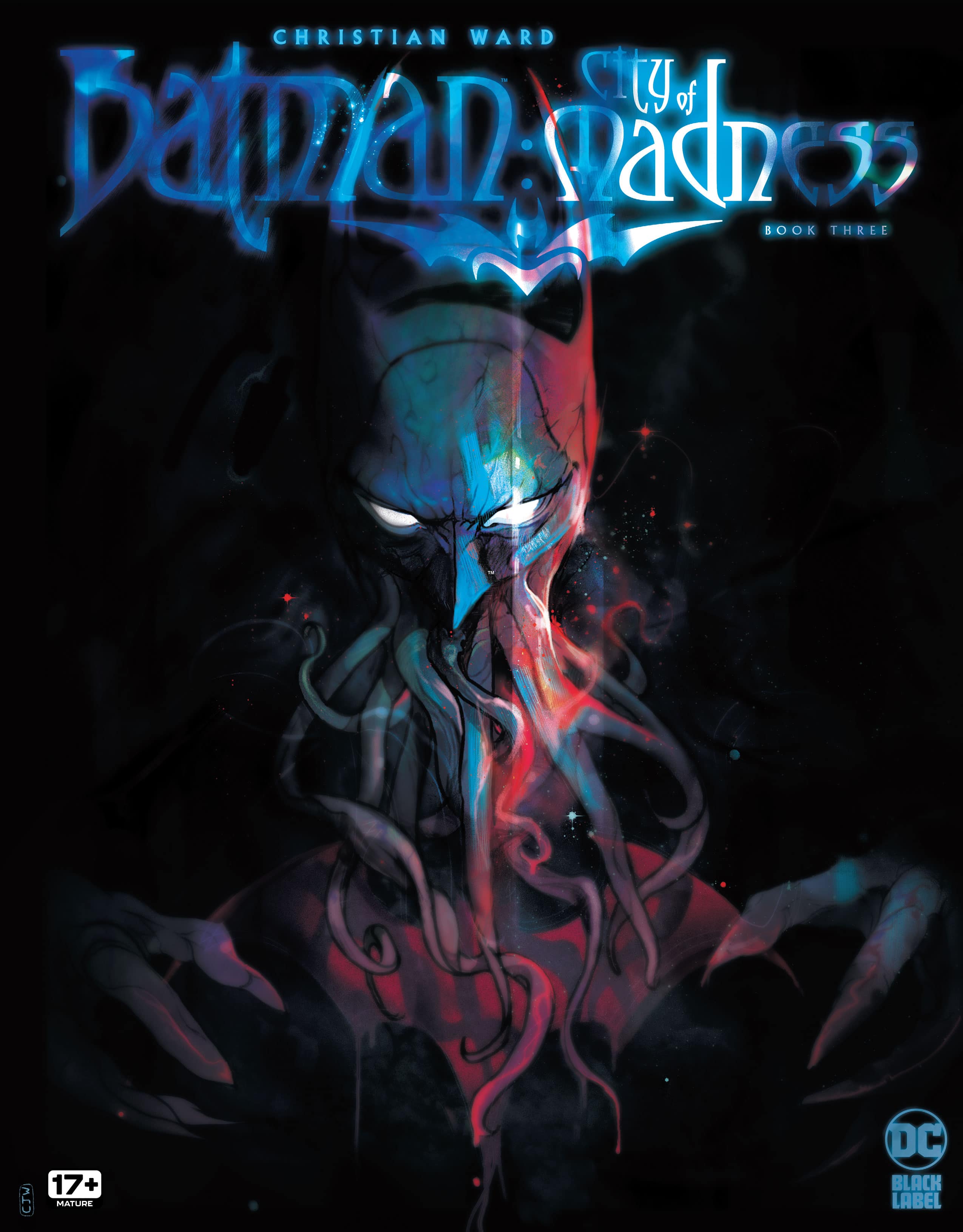Batman: City of Madness #3

Recap
THE TERRIBLE ORIGIN OF THE GOTHAM BELOW IS REVEALED IN THE FINAL ISSUE OF THE COSMIC HORROR EPIC! The terrible origin of the Gotham Below—and of those responsible for protecting its maddening secrets—is revealed! Batman and Talon have fought their way through the underground city's nightmarish villains to rescue Jevony, but has the Batman Below already twisted his mind past the point of saving?
Review
Batman: City of Madness #3 picks up with the Dark Knight’s descent into the Gotham Below, wrapping up this Black Label, alternate reality take on Batman. There is a lot to love about this final issue, especially the top tier art and stellar plot. On the flip side, some aspects fall flat, such as certain character moments, the final confrontation, and an ending that may or may not break the internet. Nonetheless, Batman: City of Madness #3 excels in what it sets out to do, with an overall positive look into the future for what this series could become.

The most compelling aspect of Batman: City of Madness #3, and by extension the entire series, is Christian Ward’s art style. This final issue in particular takes place almost entirely in the Gotham Below, and it looks horrifying, beautiful, and mystifying all at the same time. Ward’s use of color really gives this book a neon, quasi 80’s feel, while also firmly cementing this as a tale revolving around the occult. Ward’s take on the Batman costume is also inspired by this more colorful palette, with the suit itself consisting of a mostly dark blue outside, with the inside of the cape and certain aspects being purple. This costume is not one you would ever typically see in the main continuity, but part of the fun of Black Label is being able to play around with these elements. The world itself and character designs are very stylized, with a heavy focus on the dichotomy between red and blue. This is where the purple on Batman’s costume comes in, identifying him as a force that can exist in both the real world and the one below. Ward knocks it out of the park with the art here, identifying a version of Gotham that is destined to stick in fans’ memories for years to come.

The story here and the themes revolve directly around trauma, touching on ideas that “smart” fans have had about Gotham and Batman over the last several years on social media. The common criticisms that are sprouted online are that Batman creates and perpetuates his own villains, the villains are as much victims as they are criminals, and that Batman actually does kill people even if it may be unintentional. Somehow Ward manages to touch on all of these aspects throughout this final issue, with some of which come across genuine while the others seem a bit pandering. The combination of all of these aspects definitely comes across in an entertaining fashion, so depending on your opinions on these controversial takes, your mileage may vary.

SPOILERS TO FOLLOW:
It’s hard to talk about this finale, especially some of the very important elements without talking about spoilers. Starting with the positives: Ward does an excellent job in weaving together a very fun, occult style narrative that feels well earned by the time the pay off happens. It is revealed that the Gotham Below is a result of Arthur Arkham’s trauma being fed to a mythical creature that was summoned by his father in a moment of weakness. The creature thrives on the trauma of its victims so it made Arthur the Batman Below to continue a false sense of trauma within the boy. This concept works really well overall and is one of the best creative decisions throughout the issue.

The final piece of this issue that is destined to set the internet ablaze is the Joker reveal at the end. When the occult creature took Arthur down below he left a copy in his place, tricking his father into thinking that his son was still alive. The question raised at the end is what became of this copy, who did the copy of Arthur Arkham become? Well, in a total leap in logic, the issue shifts over to show the Joker putting on his makeup, insinuating that the copy became him. This could be interpreted in a few different ways, one of which being that the question was meant to be left unanswered and the Joker reveal was only to tie back into the themes of Gotham’s trauma. That is probably a bit of a stretch and the former is far more likely. This ending seemed to come out of nowhere and adds yet another origin to a character that is overused today.
Final Thoughts
Batman: City of Madness #3 is a fun conclusion to a very inventful and colorful series, although the ending is a little contrived.
Batman: City of Madness #3: A Mirror of The Mind
- Writing - 8/108/10
- Storyline - 9/109/10
- Art - 10/1010/10
- Color - 10/1010/10
- Cover Art - 10/1010/10





